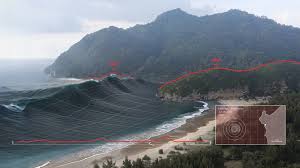The Impact and Legacy of the 2004 Tsunami

Introduction
The 2004 tsunami, caused by a massive undersea earthquake off the coast of Sumatra, Indonesia, is recognized as one of the deadliest natural disasters in recorded history. Striking on December 26, 2004, it resulted in catastrophic damage across fourteen countries bordering the Indian Ocean, claiming over 230,000 lives and displacing millions. The significance of this event is not only in its immediate human toll but also in the lasting effects it had on disaster preparedness and response strategies globally.
The Disaster Unfolds
The earthquake, measuring 9.1–9.3 on the moment magnitude scale, triggered a series of waves that reached as high as 30 meters in some areas. Coastal regions of Indonesia, especially Aceh Province, were hit hardest. However, the tsunami’s reach extended to Thailand, India, Sri Lanka, and even as far as the east coast of Africa, demonstrating the ocean’s vast power and its impact on human societies. Immediate rescue efforts were complicated by damaged infrastructures, as roads, hospitals, and communication systems were overwhelmed or destroyed in the aftermath.
Response and Recovery Efforts
International response to the tragedy marked a significant moment in humanitarian efforts. More than 100 countries responded to the crisis, contributing over $14 billion in aid. Organizations like the United Nations, Red Cross, and various NGOs mobilized teams for search and rescue operations, medical assistance, and psychological support for survivors. Over the years, many affected countries have rebuilt homes, schools, and other infrastructures, leading to a gradual recovery of communities.
Lessons Learned
The aftermath of the 2004 tsunami prompted significant changes in global disaster preparedness. The event led to the establishment of the Indian Ocean Tsunami Warning System (IOTWS), improving early warning capabilities for future disasters. Educational programs aimed at increasing awareness about tsunamis and other natural disasters became pivotal in potentially saving lives during subsequent events.
Conclusion
The 2004 tsunami remains a stark reminder of nature’s ferocity and the vulnerabilities faced by coastal communities. While the recovery efforts have provided numerous lessons on resilience and preparation, the loss endured continues to resonate in the hearts of many, shaping policies and community planning aimed at mitigating the effects of future disasters. As climate change and rising sea levels present new threats to coastal regions, the lessons learned from this tragedy are more pertinent than ever, underscoring the need for vigilance and preparedness in the face of natural calamities.









